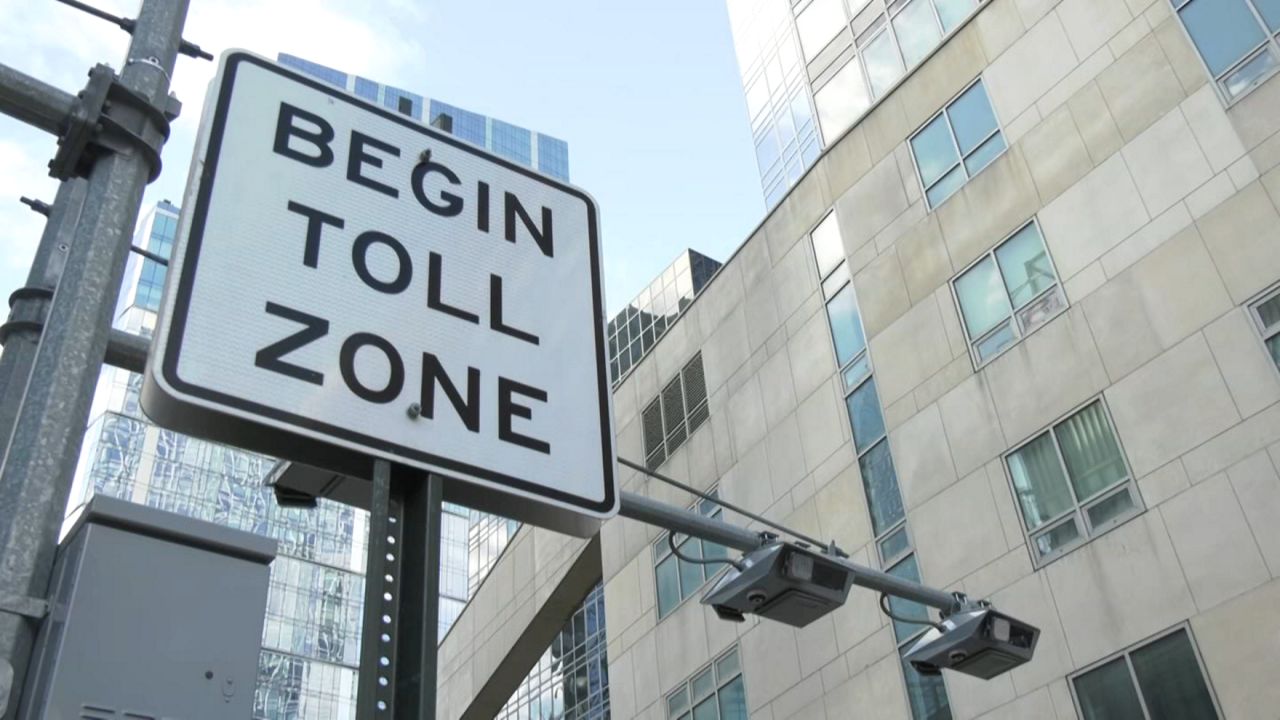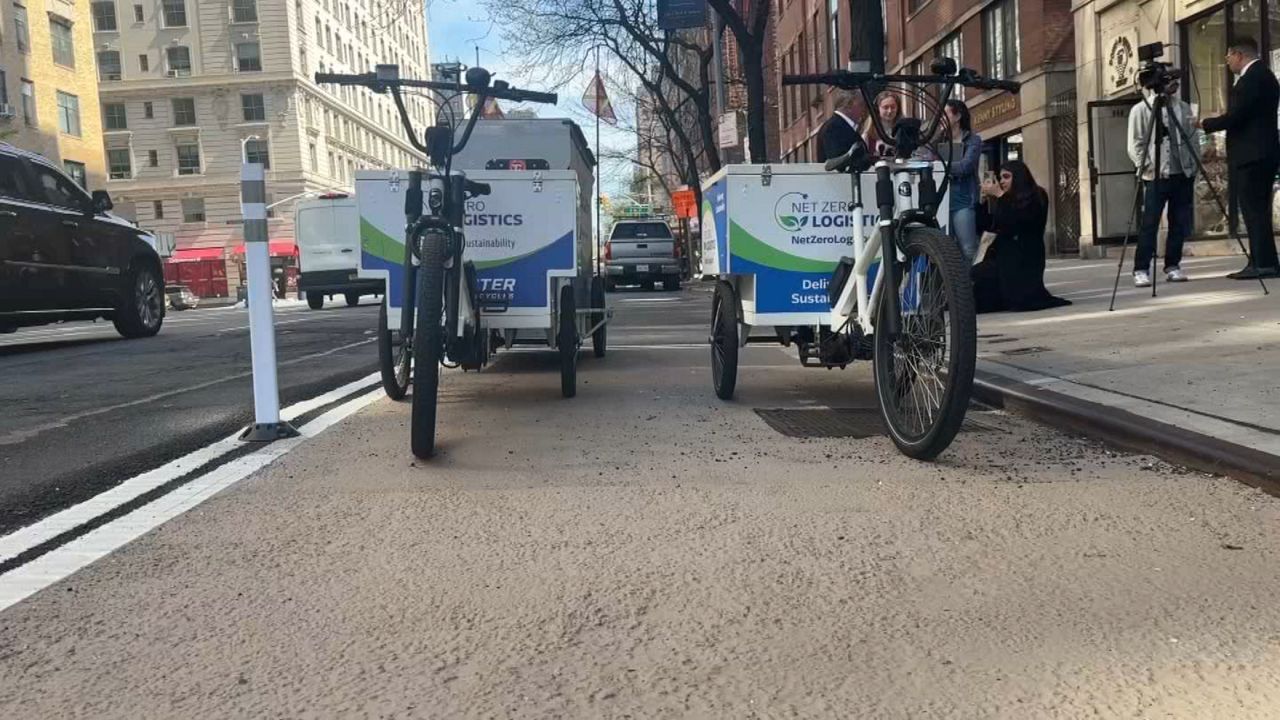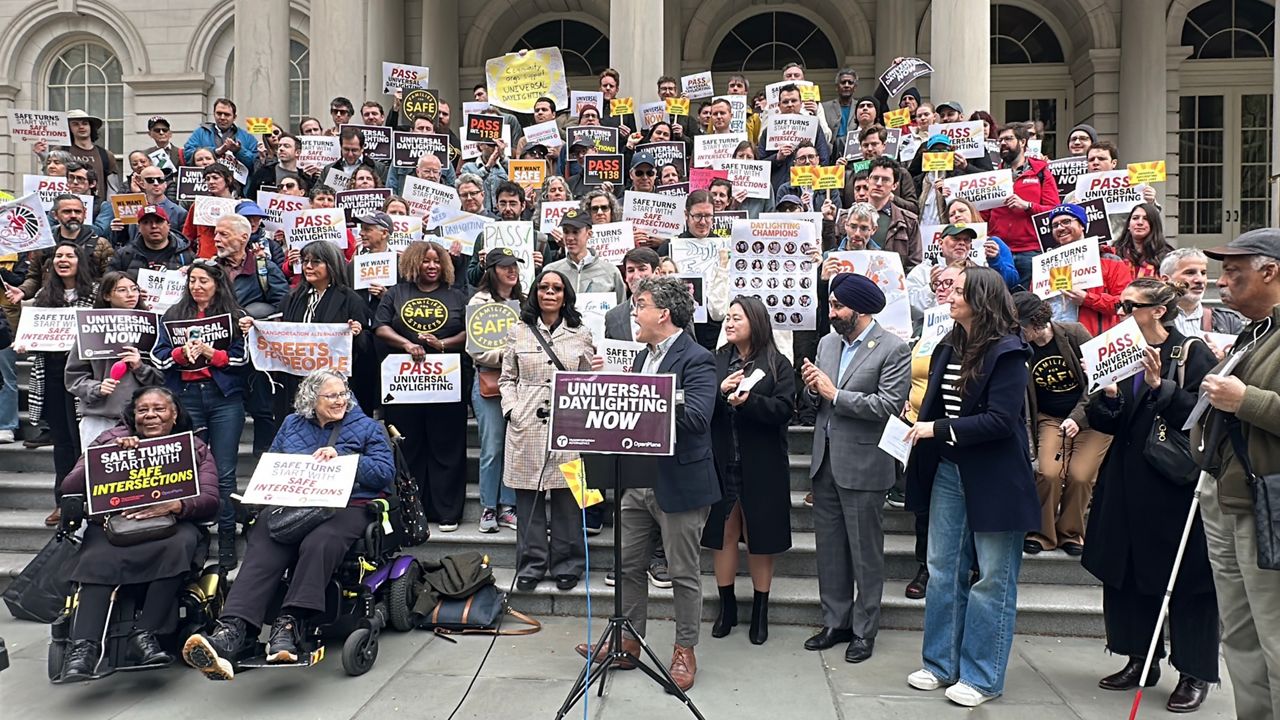Photo caption: A woman uses an umbrella as she exits the Lincoln Center subway station during a rain shower brought about by Tropical Storm Fay on July 10, 2020, in New York. Frank Franklin II/AP.
Several subway stations in New York City saw flooding Friday due to Tropical Storm Fay despite the MTA’s efforts to get the transit system ready.
The MTA had prepared for Tropical Storm Fay for two days, given that heavy rain means waterfalls in subway stations.
Friday was no exception, as a subway rider recorded the video above of a waterfall in the Court Street station in Long Island City.
An MTA spokeswoman said a clogged vent between the sidewalk in the subway station caused the waterfall. The MTA sent a vacuum truck to clean it up.
Even as the heavy rainfall passed, the 42nd Street-Bryant Park subway station saw flooding on a downtown platform.
In a statement, an MTA spokesperson said, "The MTA has done significant planning with rapid response crews, pre-positioned gear, and sealed street-level gratings in vulnerable areas. Tropical storms mean significant amounts of rain and not surprisingly some of that water has made it into our subway system, via blocked drains and vents, in some cases due to a backup of city catch-basins. Isolated pockets of flooding, where reported, were quickly addressed."
Earlier Friday, NY1 visited a hydraulics facility in downtown Brooklyn to see the tools transit workers used to pump hundreds of gallons of water out of the system a minute.
MTA Chairman and CEO Patrick J. Foye said the agency had activated its 24/7 command center.
“We have a comprehensive, agency-wide plan in place to protect the system and ensure the safety of all employees and customers,” he said.
Subway crews are monitoring flood-prone locations, inspecting track pumps, drains and sewer connections. Emergency response trucks and equipment were prepared to respond in case of flooding, and street vents are being covered in high-risk locations.
Agency personnel are monitoring bus depots and routes in vulnerable areas for possible flash flooding. Extra crews and equipment are ready to go in case subway service is disrupted or buses break down.
The MTA is also monitoring the Staten Island Railway on the South Shore, especially in flood-prone Richmond Terrace. Staten Island has already seen at least 2 inches of rain.
Long Island Rail Road and Metro-North track, signal and power crews and emergency equipment have been deployed, as have public information staff to keep customers updated as conditions change and the storm progresses.
Roof and storm drains will be cleared, and tree-removal staff is on standby, and track speeds will be adjusted according to wind speeds.
At the city’s bridges and tunnels, staff is ready to deploy to flood areas, and weather sensors are monitoring conditions at all locations. Depending on wind speeds, a ban on empty trailers and tandem trucks could be put in place.
Of course, the MTA is asking all riders and drivers to take safety precautions during and after the storm: allow for extra time, be especially careful when walking on platforms and sidewalks, and be aware of overhanging trees and power lines.









